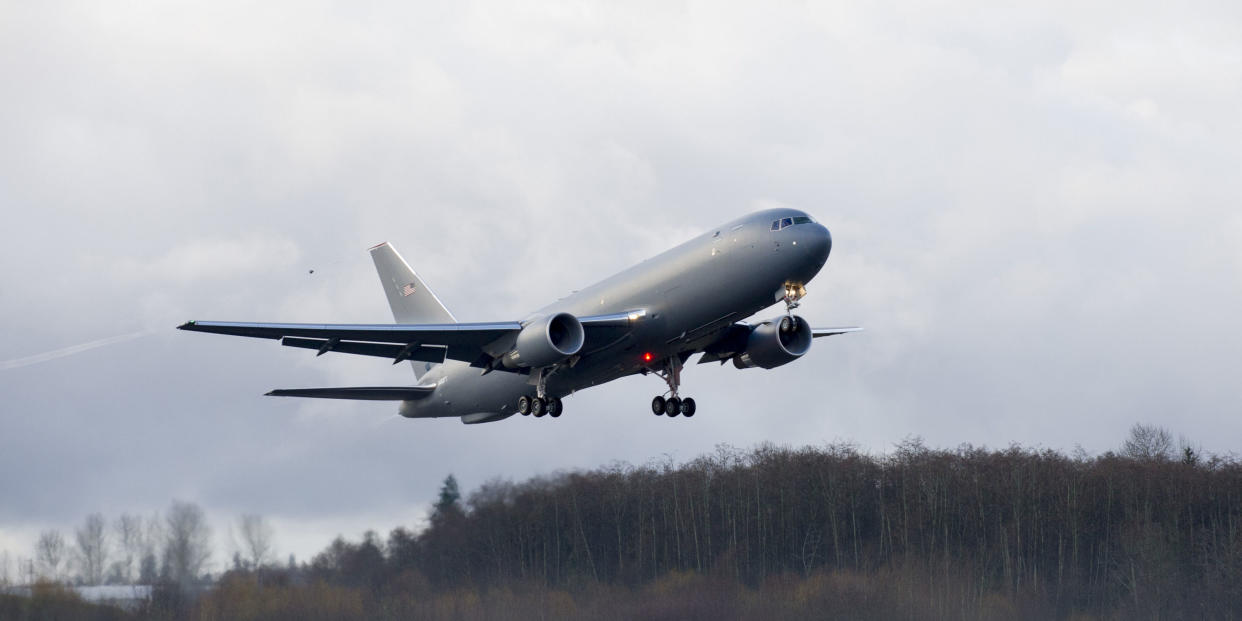The Air Force Wants a "Cloaking Device" for its Tankers

The head of the U.S. Air Force's tanker fleet wants a "cloaking device" capable of hiding his giant aerial refueling planes from enemy eyes. The service is worried that such planes would become easy targets in a war scenario involving large, capable air forces such as Russia or China.
Almost all major air forces rely on aerial refueling tankers to extend keep their planes flying, to extend their patrol times or help them cross vast distances. Without tankers, the F-35A Joint Strike Fighter would have a combat radius (the distance a combat aircraft can travel one way, expecting combat, fully loaded with weapons) of less than 600 miles.
The reliance on tankers makes them an air force's Achilles' heel, and prime targets in wartime. Large, slow, and easy to spot, such planes typically circle behind the air battle, positioning themselves behind a wall of friendly planes. Some air forces including China and Russia train to hunt such planes down. Russia even created an extremely fast, long range air-to-air missile, the Novator K-100, capable of downing tankers, E-3 AWACS airborne early warning and control planes, and other support aircraft at ranges of up to 248 miles.
The Air Force has a new tanker, the KC-46 Pegasus, rolling off assembly lines and set to enter service in 2018. Based on the 767 airliner, the KC-46 has zero stealth capability. The only alternative is to add it electronically, and that's where the idea of a "cloaking device" comes in.
General Carlton Everhart, head of the Air Mobility Command, told Bloomberg News that the solution may involve "technology to alter the plane's radar image, or waveform, so it appears to be 'either in a different location in the air' or 'reduced or disappears altogether: Now you see me, now you don't.'" That would be far more affordable than scrapping the KC-46 project -- which has already seen billions invested in it -- and starting over with a stealthier design.
What would such a device look like? Defense contractor Raytheon, which is working on the Next Generation Jammer for the EA-18G Growler electronic attack plane, speculates such a device could be a radar jammer "that can interpret radar signals and adapt quickly to keep aircraft hidden".
Raytheon says one key requirement would be a "cognitive electronic warfare" system that can learn enemy radar signals and quickly adapt to them, deceiving the enemy as to where the tanker is coming from. The speed with which enemy signals would need to be analyzed and responded to means that artificial intelligence would likely operate the jammers and not a human being. Another key requirement: the ability to generate lots amounts of electricity to power the jammers.
Whatever the solution, if Air Mobility Command develops such a system for its tankers the entire Air Force will benefit. Eventually all Air Force planes could carry a system, even fifth generation fighters such as the F-22 and F-35, to give them an extra measure of protection. In the meantime, the service's tankers need all the help they can get.
Source: Bloomberg
You Might Also Like

